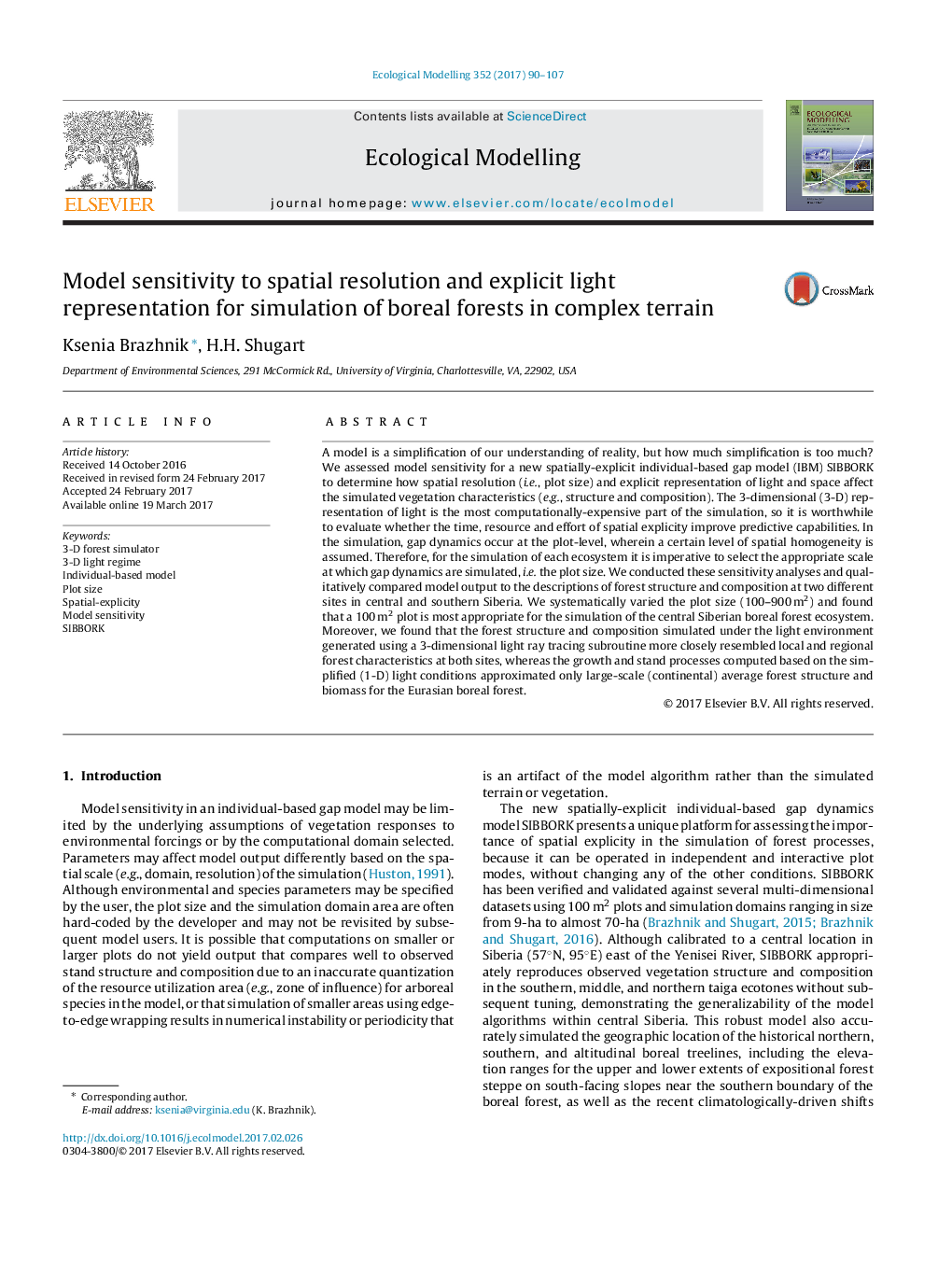| Article ID | Journal | Published Year | Pages | File Type |
|---|---|---|---|---|
| 5742250 | Ecological Modelling | 2017 | 18 Pages |
â¢In gap model simulations, spatial resolution (plot size) must be congruent with average size of dominant tree canopy in order to convey gap dynamics..â¢100 m2 plots best suited for Siberian boreal forest simulations.â¢Spatially-explicit representation of light environment (3-D) enhances predictive capabilities at the regional level.â¢Simplification of the light environment to 1-D does not adversely affect predictive capabilities at the continental level.
A model is a simplification of our understanding of reality, but how much simplification is too much? We assessed model sensitivity for a new spatially-explicit individual-based gap model (IBM) SIBBORK to determine how spatial resolution (i.e., plot size) and explicit representation of light and space affect the simulated vegetation characteristics (e.g., structure and composition). The 3-dimensional (3-D) representation of light is the most computationally-expensive part of the simulation, so it is worthwhile to evaluate whether the time, resource and effort of spatial explicity improve predictive capabilities. In the simulation, gap dynamics occur at the plot-level, wherein a certain level of spatial homogeneity is assumed. Therefore, for the simulation of each ecosystem it is imperative to select the appropriate scale at which gap dynamics are simulated, i.e. the plot size. We conducted these sensitivity analyses and qualitatively compared model output to the descriptions of forest structure and composition at two different sites in central and southern Siberia. We systematically varied the plot size (100-900Â m2) and found that a 100Â m2 plot is most appropriate for the simulation of the central Siberian boreal forest ecosystem. Moreover, we found that the forest structure and composition simulated under the light environment generated using a 3-dimensional light ray tracing subroutine more closely resembled local and regional forest characteristics at both sites, whereas the growth and stand processes computed based on the simplified (1-D) light conditions approximated only large-scale (continental) average forest structure and biomass for the Eurasian boreal forest.
